








Welcome to the 8th WoCoVA!
We are pleased to welcome you to the 8th WoCoVA in the beautiful city of Prague in the Czech Republic.
Personally, this edition is going to be a very special WoCoVA, because it will be the last one that I am leading as president of GloVANet / WoCoVA.
This biennial multidisciplinary and multi-professional event will cover all aspects of vascular access, including topics of materials, choice of device, insertion techniques, tip location methods and prevention, and management of vascular access device related complications, among other topics in the VA field.
Scientific and educational sessions, hosted by the most important international experts, and oral and poster abstracts, presented by upcoming scientists, will offer an exceptional opportunity to advance the knowledge and expertise on vascular access.
In this 3-day high quality program you will be able to update and advance your knowledge on vascular access research & innovations and meet experts from all around the world. Furthermore, the aforementioned sessions and presentations will prove to be valuable to sharing experiences and learnings about future trends and innovations in the field of VA-devices.
On behalf of the Scientific Committee, the WoCoVA organizational team, the SPPK and the Czech University, I wish you a pleasant and insightful learning experience in Prague.
Sincerely,
Ton van Boxtel Founder, CEO and president GloVANet / WoCoVA
Mission GloVANet
GloVANet provides knowledge, tools, and education, based on the latest science and consensus, for all involved in vascular access, to have the best infusion technology for optimal patient care everywhere in the world.
Every 2 years, in the even years, GloVANet organizes its World Congress on Vascular Access (WoCoVA). The goals and objectives of this congress are:
Advance and disseminate knowledge and technology to improve the quality of treatment of patients all over the globe.
Encourage and support research to further improve the quality of vascular access and reducing VA-related complications.
Bring new technologies to a global audience.
Create a collegial environment for sharing information.
Provide professional and educational resources & opportunities globally.
Initiate and develop VA-related consensus tools and protocols.
To support its mission, WoCoVA has several committees to develop and execute its different programs:
Scientific Committee (11 members: Chair Mauro Pittiruti)
Global Committee (30+ members: Chair Josie Stone)
Organizing Committee (4 members: Chair Ton van Boxtel)

This committee consists of representatives from all over the world. It is the congress’s ears and eyes ensuring that different global needs and opinions are covered on the subject of vascular access.
Josie Stone, Chair Global Committee, USA
Argentina - Maria Veronica Mauri
Australia - Evan Alexandrou
Austria - Christian Breschan
Belgium - Martine Jérôme
Brazil - Claudia Luz
Canada - Sharon Armes / Tami Jemson
China - Jingui Zhang / Sun Hong / Chunyan Li
Czech Republic - Jiri Charvat
France - Christian Dupont
Germany - Ulf Teichgräber
Greece - Evangelos Konstantinou
Hong Kong - Peter Tang
Hungary - Agi Szekacs
India - Anil Bhambhani
Iran - Morteza Khavanin Zadeh
Ireland - Peter Carr
Italy - Mauro Pittiruti
Lebanon - Jocelyne Abou Jaoude
New Zealand - Greg Lines
Qatar - Mohammad Bayoumi
Philippines - Susan Labuntog
Portugal - Rodrigo Oom
South Africa - Louise Esterhuizen
South Korea - Jang Yong Kim
Spain - Maria Antonia Cubero Perez / Paloma Ruiz Hernandez
Sweden - Karin Johansson
Switzerland - Katharina Bosshart
The Netherlands - Ton van Boxtel
United Kingdom - Andrew Barton
USA - Tim Spencer
The Scientific Committee ensures that the WoCoVA program meets its high standards, making sure that content presented meets WoCoVA’s quality requirements.
Mauro Pittiruti, Chair Scientific Committee, Italy
Ton van Boxtel – The Netherlands
Lieve Goossens – Belgium
Gloria Ortiz Miluy – Spain
Tim Spencer - USA
Josie Stone – USA
Marc Stranz - USA
Christian Dupont - France
Evan Alexandrou - Australia
Evangelos Konstantinou - Greece
Fulvio Pinelli - Italy
The organizing committee deals with all aspects to make the congress a success.
Ton van Boxtel – Chair Organizing Committee
Jacoline Zilverentant – Congress Manager
Toine Hulshof – Manager Communication and Company
Contacts
Lynn van Rennes – Secretariat WoCoVA
2002 - 2009: AVA discussions








2009: Birth of WoCoVA
2010 1st WoCoVA
Amsterdam, Netherlands
2014: 3rd WoCoVA
Berlin, Germany
2012: 2nd WoCoVA
Amsterdam, Netherlands
2015: 1st WoCoVA Special Event
Hong Kong
2016: 4th WoCoVA
Lisbon, Portugal
2018: Launch of GloVANet
2017: 2nd WoCoVA Special Event
Perth, Australia



2018: 5th WoCoVA
Copenhagen, Denmark

2019: 3rd WoCoVA Special Event
Sao Paulo, Brazil
2020: WoCoVA Live!
Virtual
2020 - 2023: WoCoVA MtE
Virtual
2021: 6th WoCoVA
Virtual
2022 WoCoVA MtE China
Virtual
2022: 7th WoCoVA
Athens, Greece



2023: 4th WoCoVA Special Event
Toronto, Canada

Wifi Access PCC
Please check your email for the PRE and POST digital congress bags for all the relevant information before and after the congress
network: 8th WoCoVA
password: Wocova24
E-Poster Platform
All posters on your device
8th WoCoVA website
All details and latest news

Overview and times
Industry Symposia overview and times


08:00 – 09:00 Registration
09:00 – 10:05 F01. Opening 8th WoCoVA
09:00 – 09:20
Opening - Ton van Boxtel, MSc, RN (NL)
Welcome to all participants, speakers and supporting companies.
09:20 – 10:00 Neutral, irritant, and vesicant solutions: a key to the choice of the VAD - Marc Stranz, PharmD (US)
Phlebitis is a common complication of infused medications. This presentation reviews the vascular cytotoxicity of drugs and the success of protective measures. Causes such as pH, osmolarity, and intracellular drug activity are addressed, as well as underlying physiologic conditions that predispose to vascular inflammation. Nursing interventions to avoid phlebitis are well documented. Pharmacy’s role is not so well defined, but recent publications provide a role and the necessary collaboration.
10:00 –10:05 Commercials
10:05 – 11:05 F02. Short peripheral cannulas today
Chairs: Evan Alexandrou (AU) and Christian Dupont (FR)
10:05 – 10:25 Standard vs. integrated SPC - Peter Carr, BSc, MMedSc, PhD, RGN (IE)
This presentation will provide a synthesis of evidence on the use of an integrated and non-integrated peripheral intravenous catheter (PIVC) in clinical settings. It highlights some nuanced considerations before selecting a PIVC for optimal patient outcomes. Despite the widespread use of PIVCs few well designed clinical trials compare integrated PIVCs and non-integrated PIVCs. However, a critical appraisal of the published evidence to date will highlight factors such as insertion success rates, complication rates (including infection, thrombosis, thrombophlebitis, occlusion and dislodgement), dwell time, patient discomfort, and healthcare costs. In providing an analysis of clinical trials on these PIVC types insights into the advantages and limitations of each catheter type will be presented. Integrated PIVCs potentially reduce catheter failure by minimizing intravenous catheter movement, which can contribute to completion of therapy and an enhanced patient experience. However, concerns regarding increased costs and complexity of use may arise. Non-integrated PIVCs, often regarded as simpler and potentially more costeffective, may pose higher risks of catheter movement and post insertion failure. This presentation will conclude with a critique of the clinical service provision required for these PIVCs. It will add some suggestions for future registered clinical trials comparing the effectiveness of integrated versus nonintegrated PIVCs.
10:25 – 10:45 New strategies for SPC: ultrasound guidance and glue - Amit Bahl, MD, MPH (US)
Explore innovative approaches to vascular access in this presentation. Discover the inherent limitations of traditional methods for placing short peripheral catheters solely through palpation and visualization. However, there’s a solution! Ultrasound emerges as a powerful adjunct modality in this process. Experience firsthand how ultrasound elevates the assessment process by delivering vital data that aids in vein mapping. Leveraging this information will optimize insertions, leading to superior vascular access outcomes. Despite its advanced nature, methods to overcome the learning curve and seamlessly integrate ultrasound into everyday practice will be discussed, ensuring accessibility for generalist nurses. Join us as we uncover the potential of ultrasound technology to enhance patient care and streamline procedures.
Abstract Presentation
10:45 – 10:55
10:55 – 11:05
Efficacy of PIVC insertion using imaging technology compared to combined palpation and visualization. The EPIC randomised controlled trial - Tricia Kleidon (AU)
Discussion
11:05 – 11:15 Break
11:15 – 12:00 Industry Symposium: Polymed/Plan 1 Health
12:00 – 13:00 Lunch
12:10 - 12:45 Poster presentations (poster area)
13:00 – 15:05
13:00 – 13:20
13:20 – 13:40
F03. Choice of Vascular Access Device (VAD) in oncology
Chairs: Evangelos Konstantinou (GR) and Jiri Charvat (CZ)
The device of the future in oncology: the PICC-port - Sergio Bertoglio, MD (IT)
The PICC-port represents a technical evolution of the brachial port which has proven to be extremely safe and effective for medium and long-term central and non-central venous infusions. Since its introduction in Italy over five years ago, its development has clearly grown in many countries with major complication rates completely similar to those of chest ports and decidedly improved compared to brachial ports. Initially used mainly in oncology patients, its indications have expanded to include chronic non-oncological pathologies. Recent clinical trials have highlighted greater patient acceptance and better QoL when compared with that of other long-lasting vascular access devices.
Tunneled catheters vs. PICCs vs. ports: different devices, different indications - Jonathan Moss, MBChB, FRCR, FRCS (UK)
The CAVA trial is the worlds largest randomised trial comparing PICC, Hickman and PORTs. PORTs approximately halved the complication rate compared with the the other two devices. A health economic analyses demonstrated them to be cost effective and qualitative analysis showed them to be the preferred option from a patient and staff perspective. The trial provides more evidence to support a global change from PICC and Hickman to PORTs for those needing chemotherapy of 3 or more months duration
13:40 – 14:00
Current insertion bundles for port placement - Fabrizio Brescia, MD (IT)
The insertion of totally implantable venous access devices with subcutaneous reservoir (ports) is a widely used procedure in clinical practice. These devices are usually preferred for cancer patients undergoing chemotherapy and requiring infrequent access (less than once per week).
In the last four decades, ports have been inserted mostly by direct cannulation of deep veins of the supra/ infraclavicular area, with subcutaneous placement of the reservoir above the major pectoral muscle (so-called ‘chest-port’). Chest-port insertion was soon regarded as a relatively invasive procedure potentially associated with immediate (pneumothorax, hemothorax, arterial puncture, arrhythmias, air embolism) and late complications (thrombosis, occlusion, infection, catheter pinch-off). In the last decade, a new type of brachial port has been introduced in clinical practice, the so-called ‘PICC-port’. It is a brachial port inserted according to the methodology currently adopted for peripherally inserted central catheters (PICC). Several studies have demonstrated that PICC-port insertion is completely safe, is not associated with any relevant immediate complications, and the overall incidence of late complications is significantly lower than traditional brachial ports. Furthermore, the PICC-port yields an excellent aesthetic result and is associated with optimal patient compliance. Current insertion bundles for port placement include effective strategies that aims to minimize immediate, early, or late insertion-associated complications.
14:00 – 14:20
Choice of VAD and risk of bleeding: a GAVeCeLT consensus - Maria Giuseppina Annetta, MD (IT)
In this presentation, we will report the results of the GAVeCeLT consensus about the indication and the choice of the most appropriate venous access device when there is an abnormal coagulation state, either because of underlying disease or because of anti-thrombotic or anti-platelet treatment.
Abstract Presentations
14:20 - 14:30
14:30 - 14:40
14:40 - 14:50
14:50 - 15:00
PICC-PORTs – experience from the Vascular Access Centre of the 3rd Medical Faculty of Charles University and the Thomayer University Hospital in Prague - Oliver Kuchař (CZ)
The power of a team: PICC-port insertion by Interventional Radiology team in Canary Island. Preliminary results - Aday García Almeida (ES)
Education in vascular access with regard to the results of a national survey and the implementation of new treatment modalities in cancer patients - Viktor Manasek (CZ)
Discussion
15:00 - 15:05 Commercials
15:05 – 15:45 Break
15:15 – 15:39 Poster presentations (poster area)
15:45 – 17:25 F04. The midline (midclavicular) and the long peripheral catheter (mini-midline)
Chairs: Amit Bahl (US) and Antonio Gidaro (IT)
15:45 – 16:05 The persistent confusion between LPC and midline - Maurizio Pacilli, MBBS, Paed Surg, MD, FRCS, FRACS (AU)
Peripheral intravenous access involves intravenous devices that terminate distal to the subclavian or femoral veins. There are three main options for peripheral intravenous access, these are:
1.Peripheral intravenous catheters (PIVCs) or “cannulas” – 2-6 cm in length and inserted with a catheter-overneedle method;
2.Long peripheral catheters (LPCs) – 6-15 cm in length, most commonly inserted with a direct Seldinger method and relatively new;
3.Midline catheters (MCs) – 15-25 cm in length and most commonly inserted with a modified Seldinger method. Standard PIVCs are only reliable for 2-4 days. LPCs, on the other hand, are reliable for 7-14 days, whilst remaining relatively straightforward to insert compared to MCs. While the nomenclature of PIVCs and MCs is generally consistent, this is not the case for LPCs. Furthermore, confusion remains with the use of LPCs, regarding the indications for insertion, the use of ultrasound guidance for vein cannulation, the position of the tip and type of products suitable for infusion. The aim of this talk to provide a comprehensive overview of the current issues and confusion surrounding the use of LPCs and MCs.
16:05 – 16:25
Ultrasound for tip location of midline - Stefano Elli, RN (IT)
Midline catheters, as opposed to the more commonly known long peripheral catheters, are characterized by the position of the tip intrathoracically rather than in the upper limb. This particularity requires greater attention in determining the correct position of the catheter tip (tip location), which still struggles to find resonance in common clinical practice. The use of ultrasound for tip location of Midlines represents a simple, effective, and low-cost opportunity. The most critical position for Midline tip is probably the transition area between axillary and subclavian vein.
16:25 – 16:45
Midlines for home infusion - Victoria Armenteros-Yeguas, RN (ES)
One of the indications of midlines is the safe infusion of intravenous therapy at home with a unique and successful vascular access device. Although there is a large amount of literature sharing this experience, there is still a lack of knowledge about midclavicular. The intravenous therapy team (ITT) of Araba University hospital started using this catheter in 2012. Over the last 11 years, more than 7500 midclavicular lines have been inserted by the ITT. More than 10% of the catheters inserted during the hospitalization were used for home care too. Midclavicular lines are removed without any complications in more than 80% of the cases. On balance, the experience of home service health professionals has been extremely positive.
16:45 – 17:05
The current indication to LPC - Jiri Charvat, MD, PhD (CZ)
Peripheral vascular access is sufficient in the majority of patients. Short peripheral catheter (peripheral cannula) has been invented several decades ago. The advantage of a peripheral cannula is relatively easy insertion in the case of a good peripheral venous system. However, its dwell time is limited to a few days and is also associated with the occurrence of frequent complications. Thirty years ago, a 15-25 cm long catheter appeared (midline), which is stable in the vein and can be inserted for up to several months. However, its complications (especially thrombosis) are associated with a relatively significant involvement of the venous system, because its tip is located in the axillary or subclavian vein. During the first decade of our century, a long peripheral catheter (mini-midline) was introduced into practice, which is 6-15 cm long. It is inserted either from the forearm or from the arm, and its tip always ends in the patient’s arm. Currently, there are several types of these catheters. They can be inserted under visual control in patients with a good superficial venous system or under ultrasonographic navigation in DIVA patients. Current indications and contraindications for the introduction of this vascular device will be presented in the lecture. The advantages of ultrasonography during its insertion will also be mentioned.
Abstract Presentation
17:05 – 17:15
17:15 – 17:25
Safety and Efficacy of short peripheral intravenous catheters, long peripheral intravenous catheters, and midline catheters in patients undergoing bariatric surgery: an open-label randomized clinical trial - Linfang Zhao (CN)
Discussion
10:05 – 11:05
10:05 – 10:35
S01. Vascular Access around the world (1)
Chairs: Josie Stone (US) and Tim Spencer (US)
Implementing the INS Standard of Practice into other countries practices - Marlene Steinheiser, CRNI, PhD, RN (US)
Title: Global Implementation of the Infusion Therapy Standards of Practice (Standards)
Session Description:
In January 2024, the updated Standards were published, a global evidence-based document aimed at guiding clinicians in providing safe vascular access and infusion therapy care. During this session, using examples from clinicians around the world, we will explore the various factors, products/equipment, staffing, scope of practice, competency, education, and environments that impact clinicians when implementing the Standards.
At the conclusion of this session, participants will be able to:
1. Describe the INS 2024 Infusion Therapy Standards of Practice (Standards) as a global resource to inform practice
2. Explore areas of global improvement in vascular access/infusion therapy impacting patient care
3. Verbalize considerations while implementing the Standards used to support best practices
4. Relate to exemplars from clinicians across the globe as they discuss factors impacting implementation and their methods for success
5. Examine patient case scenarios and our role as patient advocates.
6. Summarize the steps for successful Standards implementation & policy change
10:35 – 10:55 Implementing an evidence-based vascular access team and care bundles in low-resource circumstances - Mohammad Bayoumi, MBBCH, MCS, MRCPCH, MD, FRCPCH (QA)
Dr Bayoumi will discuss the evidence behind implementing the neonatal vascular access team. He will share the experience of the neonatal vascular access team development at Hamad Medical Corporation in Qatar. Also, he will present the simulation-based training to the members before, during and after the implementation, the care bundles and the databases developed by the team and the challenges faced during the team development. He will also highlight the results and consequences of the neonatal vascular access team including reductions in the CLABSI rate, team publications, and future directions.
10:55 – 11:05 Discussion
11:05 – 11:15 Break
11:15 – 12:00 Industry Symposium: B.Braun
12:00 – 13:00 Lunch
12:10 - 12:45 Poster presentations (poster area)
13:00 – 15:05 S02. Preventing complications in neonates and children
13:00 – 13:20
13:20 – 13:40
Chairs: Maurizio Pacilli (AU) and Vito D’Andrea (IT)
Securement of VAD in children - Amanda Ullman, PhD, RN (AU)
Effective securement of vascular access devices is a vital procedure to ensure complication free device dwell. Technologies and practices are evolving rapidly to improve our approaches, but not all are 1) evidencebased, 2) neonate, child and young-person centred, 3) effective in complex healthcare situations. In this presentation we will examine the old and new approaches to vascular access device security, across these three criteria.
Technologies for diagnosis of extravasation - Roland van Rens, MaANP, NNP (NL)
Vascular access devices are crucial in neonatal care for administering medications and fluids, but they carry the risk of complications like infiltration and extravasation. Timely detection of these complications is vital to prevent harm and improve outcomes. This presentation reviews traditional tools, scoring systems, and advanced technologies for early detection.
13:40 – 14:00
Prevention of primary malposition in neonates: the Neo-ECHOTIP protocol - Giovanni Barone, MD (IT)
The aim of this presentation is to review all the available evidence about ultrasound-based tip navigation and tip location of central catheters in the neonatal population and to illustrate the novel protocol for tip navigation and location (Neo-ECHOTIP) based on such evidence.
14:00 – 14:20
Arterial access in neonates - Robin van der Lee, MD, PhD (NL)
14:20 - 14:30
Abstract Presentations
Securing non-cuffed central venous catheters in pediatric patients: The SECURED randomized clinical trial - Tricia Kleidon (AU)
14:30 - 14:40 Keep it simple specialists. One PICC, one securement device, until the end of need - Mikaela Olsen (US)
14:40 - 14:50 Pulsed wave Doppler across the superior cavoatrial junction as an aid to ultrasound-based catheter tip location by microbubble test: a pilot study - Antonio La Greca (IT)
14:50 - 15:00 Discussion
15:00 - 15:05 Commercials
15:05 – 15:45 Break
15:15 – 15:39 Poster presentations (poster area)
15:45 – 17:25 S03. Exit site protection
Chairs: Nancy Moureau (US) and Giancarlo Scoppettuolo (IT)
15:45 – 16:05 Should we use cyanoacrylate glue for all VAD insertions? - Gloria Ortis Miluy, MSc, RN (ES)
In the past years, cyanoacrylate glue has been introduced into the clinical practice of venous access devices used for increased device stabilisation, to seal the insertion site reducing local bleeding and risk of infection and close skin incisions. There are many papers demonstrating benefits of glue in the vascular access field. However, there are still unanswered questions to solve. This presentation offers an overview of recent data for this topic.
16:05 – 16:25 Prevention and treatment of MARSI - Amanda Ullman, PhD, RN (AU)
Medical adhesive related skin injury (MARSI) surrounding the vascular access site impacts at least 1 in 10 of our patients, often causing significant discomfort and increased risk of infection to our most vulnerable population (e.g., those with cancer, chronic co-morbidities). In this presentation we will review the new and traditional strategies available to prevent and treat MARSI, as well as practical resources necessary to support their sustained implementation.
16:25 – 16:45
How to choose the transparent dressing - Christian Dupont, RN (FR)
Which criterias are relevant to prevent moisture, mechanical and chemical complications as you choose a transparent dressing? What about sensitive skin? What to do in practice?
16:45 – 17:05
The best securement: subcutaneous anchorage - Alessandro Crocoli, MD (IT)
The implementation of subcutaneous anchoring devices has significantly diminished mechanical complications associated with central venous access, thereby transforming its performance. Moreover, these devices have demonstrated remarkable versatility and utility in alternative contexts.
Abstract Presentation
17:05 – 17:15
17:15 – 17:25
Enhancing Nursing Excellence in Peripheral Catheterization: Insights from an Action Research StudyPaulo Santos-Costa (PT)
Discussion
08:30 – 10:05
08:30 – 08:50
08:50 – 09:10
F05. Femoral catheters
Chairs: Fulvio Pinelli (IT) and Fabrizio Brescia (IT)
The great novelty in femoral access: the superficial femoral vein - Mauro Pittiruti, MD (IT)
The transhepatic view for ultrasound-based tip location of femoral lines - Maria Giuseppina Annetta (IT)
Femoral inserted central catheters are often inserted in patients with difficult or impossible access to the superior vena cava. Also for these central devices, proper tip location is mandatory for the correct use of the device, and it should be preferably carried out by intra-procedural methods. In this presentation, we will describe a novel, easy and accurate method of intra-procedural tip location to be applied when the final desired position of the tip is in the subdiaphragmatic vena cava, i.e., the trans-hepatic view of the inferior vena cava. This method allows a very precise location of the tip in the tract of vena cava between the renal veins and the hepatic veins: the tip of the catheter is visualized directly inside the vein, or indirectly using the ‘bubble test’.
09:10 – 09:30 Tools and techniques for femoral vein access - Matt Ostroff, MSN, VA-BC (US)
After extensive work with the femoral approach over the past 9 years from the neonatal to geriatric patient population Matthew intends to review the indications/contraindications, assessment protocols, and describe tools and techniques for femoral access including: phlebotomy, midline catheters, direct puncture of the superficial femoral vein, pseudo tunneling with long needles, traditional tunneling, prone access, and terminal catheter tip confirmation.
09:30 – 09:40 Vascular access quality control and risk management in China - Jinghui Zhang, MSN, RN (CN)
1. Introduction of intravenous therapy in Xiangya Hospital of Central South University
2.Application background of femoral vein catheterization
3.Quality control of femoral vein catheterization
4.Risk management of femoral vein catheterization
Abstract Presentation
09:40 – 09:50 Knowledge of vascular access of nursing professionals in public hospitals of the Valencian Community - Sonia Casanova-Vivas (ES)
09:50 – 10:00 Discussion
10:00 – 10:05 Commercials
10:05 – 11:15 F06. The DIVA (Difficult Intra Venous Access) patient Chairs: Sergio Bertoglio (IT) and Victoria Armenteros-Yeguas (ES)
10:05 – 10:25 Is there an ideal DIVA score? - Rick van Loon, PhD, CRNA (NL)
Difficult intravenous access is a common situation in daily clinical practice, resulting in challenging situations for both healthcare providers and patients. Many solution were found for these patients, with focus on improving first attempt cannulation success. Ultrasound seems to be the most promising and beneficial technology that can be applied during intravenous cannulation in patients with a known or predicted difficult intravenous access. For this, classification of patients with an increased risk for failed cannulation is key and should be performed before attempting to insert a catheter. Many predictive tools were created and published in recent literature. But do we have consensus on the definition of a difficult intravenous access? And can we create a generalized predictive tool that can be used throughout the entire hospital and in every category of patients? And is there a technological innovation that can assist is during the selection and classification of patients? In this presentation, we will shed a light on this definition and use of tool to predict the risk for failed cannulation or the presence of a difficult intravenous access.
10:25 – 10:45
10:45 – 11:05
11:05 – 11:15
The obese patient - Evangelos Konstantinou, MsC, PhD, RN (GR)
Vascular Access Treatment of Obese Patients
Ultrasound in DIVA patient - Evan Alexandrou, MPH, PhD, RN (AU)
Ultrasound guided peripheral venous access for difficult venous access (DIVA) is becoming an accepted practice in hospitals worldwide. This presentation will discuss current evidence on the effectiveness of ultrasound for DIVA patients and its application for assessment, insertion and using ultrasound to inform device selection so to help reduce post insertion failure.
Discussion
11:15 – 11:25 Break
11:25 – 12:10 Industry Symposium: StatSeal
12:10 – 13:10 Lunch
12:20 – 13:02 Poster presentations (poster area)
13:10 – 15:30 F07. PICC vs CICC
Chairs: Stefano Elli (IT) and Jonathan Moss (UK)
13:10 – 13:30 A new approach to the problem – the DAV expert revisited - Fulvio Pinelli, MD (IT)
Based on some strong concepts (avoid the unnecessary venous access; define the correct indication to central line vs peripheral line; take into consideration the exit site; and so on) in 2015 the DAV-expert, the GAVeCeLT algorithm of choice of vascular access, is firstly released. In the following years, it is updated and expanded to include pediatric and neonatal patients. The first to cover all clinical situations: emergency, elective, intensive care, non-intensive care; and all devices: short-, medium- and long-term VADs, also available as app, this new version has been launched as an “expert system”, which is simultaneously both an algorithm and a guide that offers the evidence behind each suggestion.
13:30 – 13:50 PICC in the patient with chronic renal failure: a decision-making algorithm - Antonio Gidaro, PhD (IT)
Definition, incidence, and risk of future dialysis by degree of renal failure. A critical reading of the 2019 KDOQI guidelines to point out the main reasons for contraindication of PICC and midline insertion in renal failure. The presentation aims to propose a decision-making algorithm to identify patients with low expected life span who may benefit from PICC and midline insertion even in renal failure.
13:50 – 14:10
The GAVeCeLT protocols for central venous catheterization (SIF, SIC, SIP) - Tim Spencer, BN, CCRN, RN, VA-BC (US)
This session will provide a review of the SIP/SIC/SIF protocols, outlining evidence-based methods for intravascular device insertion to improve patient safety and procedural efficiency.
14:10 – 14:30 The axillary approach in 2023 - Ryszard Gawda, MD, PhD (PL)
Ultrasound-guided cannulation of the axillary vein in modern intensive care. The presentation shows if an infraclavicular approach to the axillary vein can be used as a first-choice method of central venous cannulation in critically ill patients.
Abstract Presentations
14:30 – 14:40 Cost effectiveness of shifting PICC lines from interventional radiology/surgical suite to a dedicated bedside clinician: creation of a vascular access full-time employee (FTE) - Kathy Kokotis (US)
14:40 – 14:50 Centrally inserted central catheter in severe thrombocytopenic patients: can we choose the axillary approach? - André Caiado (PT)
14:50 – 15:00 Implementation contexts and strategies for peripherally inserted central catheter material and design selection: A qualitative exploration using CFIR/ERIC approach - Samantha Keogh (AU)
15:00 – 15:30 Discussion
15:30 – 16:00 Break
16:00 – 16:45 Industry Symposium: ivWatch
16:45 – 17:45 F08. Panel Discussion: Vascular Access: Developing the specialty (Plenary)
Chairs: Massimo Lamperti (AE) and Ton van Boxtel (NL)
Education and training
Introduction by Massimo Lamperti, MBA, MD (AE)
Recognition of the Vascular Access specialty Introduction by Ton van Boxtel, MSc, RN (NL)
Panel members
Mauro Pittiruti (IT), Nancy Moureau (US), Tim Spencer (US), Even Alexandrou AU), Marije Hoekendijk-Beukers (NL)
08:30 – 10:05
08:30 – 08:50
08:50 – 09:10
S04. Catheter related Infections
Chairs: Victor Rosenthal (US) and Ton van Boxtel (NL)
The role of taurolidine for prevention and treatment - Giancarlo Scoppettuolo, MD (IT)
The role of tetrasodium EDTA for infection prevention - Steve Reynolds, MD (CA)
Tetrasodium EDTA is an anticoagulant, non-antibiotic, antimicrobial, and antibiofilm agent. In its tetrasodium form, it possesses four negatively charged functional groups that are able to form a “claw-like” complex around a positively charged metal cation. This results in an irreversible, high-affinity bond between the EDTA and the ion. As such, it acts as a very strong chelating agent. When used as a central venous access device (CVAD) locking fluid, tetrasodium EDTA is able to remove ions that are needed to stabilize bacterial cell wall structure, to enable growth and maturation of a biofilm colony, and those that act as cofactors in the anticoagulation cascade. Consequently, it serves to protect against these three key avenues of CVAD complication formation. In the laboratory setting, it has been shown to completely eradicate biofilms isolated from patient CVADs, and potentiate the effect of antibiotics in resistant organisms. When used clinically, tetrasodium EDTA has resulted in an increase in colonization-free catheter survival time for hemodialysis patients, and a reduction in CLABSI and occlusion rates in the long-term parenteral nutrition population. There are also two multi-centered clinical trials currently ongoing investigating the effect of locking with tetrasodium EDTA on CVAD complication rates in adult critical care (Canada) and pediatric oncology (Australia) patients. When used as a CVAD locking fluid, tetrasodium EDTA has the potential to significantly reduce rates of colonization, CLABSI, occlusion, and thrombosis, in addition to contributing to worldwide antibiotic stewardship initiatives.
09:10 – 09:30 Infection of peripheral VADs - Marcia Ryder, Bs(hons), MS, PhD (US)
More recent global data indicate peripheral VAD-BSI rates are comparable to CVAD-CABSI rates while the incidence rate of short peripheral catheter (SPC) local infection is an alarming 7x that of SPC-CABSI and SPCfailure rates. Pre-existing and current standards of care appear to be ineffective at reducing SPC infections. What are we missing?
09:30 – 09:40 Barriers and best practices in vascular access practices of the Czech Republic - Jiri Charvat, MD, PhD (CZ)
Catheter infection is the most serious complication associated with vascular access. In the past decades, a number of guidelines regarding prevention and solution of this complication have been created. In order to comply with these guidelines it is necessary to educate continuosly the medical staff dealing with the vascular access. The selection of optimal vascular device, compliance with the correct insertion of device as well as its management during device dwelling are crucial in the prevention of catheter infection. The aim of the lecture is to inform how these principles are implemented in the Czech Republic. The importance of the national multiprofessional and multidisciplinary society in the field of vascular access will be discussed.
Abstract Presentation
09:40 – 09:50 Anti-microbial or hydrophobic materials vs conventional peripherally inserted central catheters: a multicentre, randomised controlled trial - Amanda Ullman (AU)
09:50 – 10:00 Discussion
10:00 - 10:05 Commercials
10:05 – 11:15 S05. Venous access devices (VADs) in children
Chairs: Amanda Ullman (AU) and Elias Kehagias (GR)
10:05 – 10:25 The new pediatric DAV Expert consensus - Alessandro Crocoli, MD (IT)
GAVeCeLT’s expert system DAV-EXP simplifies the process for selecting the best venous access device (DAV) for each clinical case.It was crucial to bring adult patient principles to pediatrics, where the lack of a systematic approach and the belief of “wanting to do as I have always done” had caused errors and injury to young patients.
10:25 – 10:45 Intracavitary ECG in children - Mark Weber, MSN, CRNP-AC, FCCM (US)
Intracavitary ECG is essential for central venous catheter tip location in the pediatric population. This session will discuss the important electrophysiologic principles of IC-ECG and the subtleties of its use that can be found in the pediatric population. Following a firm understanding of the physiology new research and upcoming trends in the application of IC-ECG will be discussed. At the completion of this presentation participants will have a clear understanding of the practice of IC-ECG and the potential applications to their patient population.
10:45 – 11:05 Tip location by ultrasound (ECHOTIP-ped) in children - Mauro Pittiruti, MD (IT)
11:05 – 11:15 Discussion
11:05 – 11:15 Break
11:25 – 12:10 Industry Symposium: Vygon
12:10 – 13:10 Lunch
12:20 – 13:02 Poster presentations (poster area)
13:10 – 15:30 S06. Venous access devices (VADs) in neonates
Chairs: Robin van der Lee (NL) and Matt Ostroff (US)
13:10 – 13:30 Bundles for UVC and ECC insertion - Roland van Rens, MaANP, NNP (NL)
Inserting vascular access devices may introduce potential complications, but many can be prevented through thoughtful material selection, methodological approaches, and techniques. This presentation underscores the critical necessity for tailored bundles in UVC and ECC insertion, considering the unique challenges in a neonatal population, to ensure optimal care and minimize complications.
13:30 – 13:50 Bundles for CICC and FICC insertion in neonates - Christian Breschan, D.E.A.A., MD, PhD (AT)
As clearly shown by Spagnuolo in 104 cases, the seven SIC bundles for CICC and FICC insertion also apply to neonates. They only added the use of counter fixation of the catheter wings by using Statlock®. However, there are some noteworthy differences: Subcutaneously anchored devices only exist for 3 Fr size catheters requiring a minimum diameter of 3mm of the targeted vessel which may not always be the case in babies weighing less than 1kg. Likewise such babies may also lack enough subcutaneous fat tissue for the tunneling process. Tunneling is also time consuming making it sometimes difficult to use in unstable babies or emergency situations. In addition neonates will always require deep sedation for a CICC insertion making a careful preprocedural preparation mandatory, including an adequate, warm environment, hyperextension of the neck as well as being prepared for a respiratory or cardiovascular collapse during the insertion procedure. The USG, in-plane cannulation of the brachiocephalic vein remains the first choice for CICCs in neonates.
13:50 – 14:10
The increasing use of cyanoacrylate glue in neonates - Vito D’Andrea, MD (IT)
The growing utilization of tissue adhesive technology in the realm of neonatal vascular access signifies a significant advancement in medical practice. Traditionally, securing vascular access in neonates has presented challenges due to their delicate physiology and limited accessibility. However, the introduction of tissue adhesive has revolutionized this aspect of neonatal care.
Cyanoacrylate glue is a fast-acting adhesive that polymerizes rapidly upon contact with moisture, forming a strong bond between surfaces. While traditionally used in household repairs and crafts, medical-grade cyanoacrylate adhesives have gained recognition for their potential application in securing venous catheters in neonates.
In neonatal care, the secure fixation of venous catheters is crucial for delivering essential medications and fluids to newborns, especially those in neonatal intensive care units (NICUs).
Cyanoacrylate glue offers a promising alternative for securing venous catheters in neonates. Its rapid polymerization process creates a strong and durable bond, effectively anchoring the catheter in place without the need for traditional tapes or sutures. This not only reduces the risk of skin trauma during catheter removal but also minimizes the risk of accidental dislodgement, which is particularly important in critically ill neonates.
Moreover, cyanoacrylate glue provides a waterproof and bacteria-resistant seal around the catheter insertion site, reducing the risk of infection and promoting skin integrity. This can be particularly advantageous in NICU settings where infection control is paramount.
In summary, cyanoacrylate glue could become a valuable tool in neonatal care, enhancing patient outcomes and improving the delivery of essential therapies to newborns.
14:10 – 14:30
The neonatal DAV Expert Consensus - Giovanni Barone, MD (IT)
The neonatal DAV‐expert algorithm is a GAVeCeLT/GAVePed consensus for the choice of the most appropriate venous access in newborns. The DAV expert offers a systematic set of recommendations on the choice of the most appropriate vascular access device in Neonatal Intensive Care Unit.
Abstract Presentations
14:30 – 14:40 Long-term catheter in pediatric oncology. Brachiocephalic vein ultrasound guided puncture era, analysis of complications and catheter survival - Chaves Ribeiro (BR)
14:40 – 14:50 Chest-to-arm tunneling technique in long-term central venous access placement in the pediatric patient: the CHARM-PED (CHest-to-Arm Tunneling in PEDiatric population) protocolGiorgio Calabrese (IT)
14:50 – 15:00 Pediatric central venous access device lock solutions: A network meta-analysis - Victoria Gibson (AU)
15:00 – 15:10 A prospective study on routine echocardiography before CVC removal - Giorgio Lamberti (IT)
15:10 – 15:30 Discussion
15:30 – 16:00 Break
16:00 – 16:45 Industry Symposium: Teleflex
08:30 – 09:35
08:30 – 08:50
08:50 – 09:10
F09. Arterial catheters
Chairs: Massimo Lamperti (AE) and Amy Bardin (US)
The SIA protocol - Tim Spencer, BN, CCRN, RN, VA-BC (US)
This session will review the Safe Insertion of Arterials (SIA) protocol, outlining the methods for arterial catheterization to minimize insertion-associated complications and improve device functionality while maintaining an improved patient safety profile.
Ultrasound approach to the axillary artery - Ryszard Gawda, MD, PhD (PL)
Percutaneous cannulation of the axillary artery in intensive care. The presentation outlines the evidence regarding the clinical utility of a new ultrasound-guided cannulation technique of the axillary artery in critically ill patients.
Abstract Presentation
09:10 – 09:20
Journey of vascular access teams in the Czech Republic: Development, successes and challenges - Martina Douglas (CZ)
09:20 – 09:30 Discussion
09:30 – 09:35 Commercials
09:35 – 09:45 Break
09:45 – 11:15
09:45 – 10:05
10:05 – 10:25
F10. Tip location in 2023: Intracavitary-ECG and ultrasound
Chairs: Ton van Boxtel (NL) and Lieve Goossens (BE)
IC-ECG in 2023: the standard for tip location? - Evan Alexandrou, MPH, PhD, RN (AU)
Intra cavitary ECG (IC-ECG) has become the mainstay for tip location / confirmation for bedside CVAD insertion. This presentation will discuss current evidence on the effectiveness of IC-ECG and its application for acute PICCs, CICCs and FICCs as well as for chronic devices such as implanted ports and longterm dialysis catheters.
The ECHOTIP protocol for ultrasound-based tip location - Antonio Gidaro, PhD (IT)
We will explore the ECHOTIP protocol and review new studies published since its release. Special attention will be paid to the navigation and localization of the tip for PICC insertion into the femoral vein, which was not included in the first version of the ECHOTIP protocol.
10:25 – 10:45
Wireless ultrasound transducers and wireless devices for IC-ECG: a revolution in clinical practiceFabrizio Brescia, MD (IT)
Safety in the placement of any central venous device has improved thanks to the widespread and growing use of ultrasound guidance. Ultrasound is used not only in all phases of placement of a central venous device. The intracavitary ECG method is the most accurate, safe and cost-effective method and is indicated by international guidelines as the first-choice method for an adequate tip location. Therefore, the global use of ultrasound and the intracavitary ECG method are an integral part of the insertion bundles of all central venous access, essential for the daily clinical activity of each vascular access team. The main requirements for an ultrasound trasducer and for an IC-ECG device are: ease of use, portability, adequate image quality to clearly visualize vascular and nervous structures for an US and the absence of interferences for an IC-ECG device. Using a wireless IC ECG system for tip location in combination with wireless and pocket-sized ultrasound probes with multiple transducers is very useful in bedside insertion, in COVID patients, in patients infected with multi-resistant germs, as these devices are easy to sanitize. The linear transducer of the ultrasound probe can be used for the preliminary ultrasound evaluation, for the ultrasound-guided venipuncture and the immediate exclusion of complications potentially related to the venipuncture; in case of nonapplicability or non-feasibility of the IC-ECG method, the convex transducer of the probe can be used for tip location by TTE. All the key maneuvers of the insertion procedure can be performed using two simple and space-saving devices.
10:45 – 10:55 Infusion Therapy Planning in the different specialties - Claudia Luz, (BR)
Abstract Presentation
10:55 – 11:05 Optimizing Clinical Excellence: A Programmatic Approach to Difficult Intravenous Access in the Emergency Department - Amit Bahl (US)
11:05 – 11:15 Discussion
11:15 – 11:25 Break
11:25 – 12:10 Industry Symposium: BD-China
12:10 – 13:10 Lunch
12:20 – 13:02 Poster presentations (poster area)
13:10 – 14:35 F11. Tunneling
Chairs: Maria Giuseppina Annetta (IT) and Gloria Ortiz Miluy (ES)
13:10 – 13:30 The RAVESTO protocol - Matt Ostroff, MSN, VA-BC (US)
Inspired by the work of Dr. Pittiruti, Matthew has brought tunneling innovation to the bedside in the United States. Ostroff, Moureau, and Pittiruti’s paper The RAVESTO protocol discusses all of the possible exit sites for tunneled catheters. Through some of the most interesting cases studies, the RAVESTO protocol will be depicted from traditional tunneling, to tunneling multiple catheters at the same time.
13:30 – 13:50 Chest-to-arm tunneling - Elias Kehagias, MD, PhD (GR)
The Chest-to-Arm Tunneling technique is a method to tunnel Vascular Access Devices (Ports, PICCs or cuffed PICCs) from the arm implantation or arm insertion site to the chest, where the venous access is, usually the internal jugular vein (IJV). It consists of splitting the total tunnelled distance in two halves, creating an externalization-reinsertion skin nick over the edge of the deltoid muscle.
13:50 – 14:10
Tunneling midlines - Stefano Elli, RN (IT)
Midline catheters (midclavicular) offer greater stability and durability compared to the more common long peripheral catheters. Despite their peripheral catheter characteristic, during placement, they require the same precautions as Peripherally Inserted Central Catheters (PICCs), including the need to keep the exit site in the Dawson’s green zone. Like with PICCs, it may be useful to puncture the target vein closer to the axillary cavity and move the emergency site into the green zone through catheter tunneling. Although tunneling is now a simple, fast, and low-risk procedure, it is advisable to evaluate the cost-benefit ratio and choose the appropriate tunneling technique to avoid resorting to central access in case upper limb veins in the green zone are not available.
Abstract Presentation
14:10 – 14:20
14:20 – 14:30
14:30 – 14:35
Avoiding catheter-related thrombosis: Off-label use of peripherally inserted central catheters as tunneled centrally inserted central catheters - Thomas Douchy (BE)
Discussion
Commercials
14:35 – 15:25 F12. Data collection and Education Chairs: Evan Alexandrou (AU) and Marlene Steinheiser (US)
14:35 – 14:55
Minimal requirements for VA training - Massimo Lamperti, MBA, MD (IT)
Education and training in vascular access have three fundamental steps: before, during and after vascular access insertion. Traditional education based on theoretical and hands-on training is rapidly changing with the introduction of new teaching techniques such as online learning platforms and the possibility to perform distance training to evaluate the performance of the trainees and their competencies. Artificial intelligence has already been used to facilitate the recognition of vascular structures but its exponential introduction in the clinical fields could probably be used to detect possible complications in advance and support the education and training during the different phases of the education process for vascular accesses.
14:55 – 15:15
Global data collection for global VA research - Victor Rosenthal, MD, PhD (US)
Over 50 years ago, the U.S. CDC initiated measuring central line-associated bloodstream infections (CLABSI), outlining definitions, criteria, and methodologies for data collection, and expressing CLABSI rates per 1000 central catheter-days. While industrialized countries adopted similar monitoring methodologies, low-resource nations lagged.
In 1993, I began measuring infections using this methodology in Argentinean hospitals, discovering CLABSI rates were twelve times higher than in the U.S., emphasizing critical benchmarking importance. Publishing our findings and implementing targeted measures to reduce CLABSI rates led to invitations to lecture in over 70 countries, all expressing interest in adopting this methodology. This culminated in the establishment of the International Nosocomial Infections Control Consortium (INICC), an online platform facilitating data input, report generation, benchmarking, CLABSI reduction, and research dissemination in peer-reviewed journals. Through INICC, we lowered CLABSI rates in hospitals across 150 cities in 50 countries spanning Latin-America, Asia, the Middle-East, Africa, and Eastern-Europe. Utilizing multiple logistic regression, we identified independent factors for mortality and CLABSI, along with catheter types with the lowest infection risk. We developed an optimal bundle of measures, resulting in a remarkable 90% reduction in CLABSI rates and mortality. Our research extended to bloodstream infection (BSI) rates associated with other vascular devices, such as short peripheral lines. With INICC members, we have published over 400 papers and been cited in over 21,000 opportunities, contributing to global BSI prevention understanding.
I extend a warm invitation to share my presentation and encourage your participation in our global organization dedicated to measuring and reducing BSI rates.
15:15 – 15:25 Discussion
15:25 – 15:50 Break
15:50 – 17:10
15:50 – 16:20
16:20 – 16:50
16:50 – 17:10
The future of Vascular Access
Chair: Tim Spencer (US)
Vascular access team now and tomorrow - Amy Bardin, (US)
Vascular Access, the past, the present and the future - Ton van Boxtel, MSc, RN (NL)
Closing - Ton van Boxtel, MSc, RN (NL) and Tim Spencer, BN, CCRN, RN, VA-BC (US)
08:30 – 09:35 S07. Vascular Access around the world (2)
08:30 – 09:00
Chairs: Josie Stone (US) and Paloma Ruiz Hernández (ES)
Global questionnaire on dressing, occlusion & locking - Christian Dupont, RN (FR) and Paloma Ruiz Hernández, MSN, PAN, PhD, RN (ES)
What a long survey! However colleagues from 44 different countries assessed it. So come to discuss about our common practices and our differences about dressing, occlusion and locking without forgetting to underline evidence-based.
When we work daily in our hospitals with VA we do it according to their protocols and following the recommendations of the clinical practice guidelines. But: do we really follow the same guidelines and recommendations when we are going to change the dressing, to perform the skin antisepsis, to choose the best lock solution? What are the aspects that bring us close and what are ones that distance us? To know more about these points, a survey was launched by WoCoVA. More relevant aspects will be shown during the congress in the Vascular Access around the world session.
09:00 – 09:20 Regulatory and licensure barriers to clinicians placing vascular access devices in Austria/Germany - Christian Breschan, D.E.A.A., MD, PhD (AT)
Though it is estimated that around 4 million central venous catheters per year are established within the German speaking community, the largest one in the EU, there still do not exist any vascular access teams as such, nor do there exist any guidelines for vascular access training or VA management. The only existing legal restriction in Austria in terms of vascular access says that central venous catheters are only allowed to be inserted by physicians or physicians in training under supervision.
09:20 – 09:35 Discussion
09:35 – 09:45 Break
09:45 – 11:15 S08. Catheter-related thrombosis Chairs: Massimo Lamperti (AE) and Jiri Charvat (CZ)
09:45 – 10:05
Should we perform ultrasound before CVC removal? - Fulvio Pinelli, MD (IT)
Despite several effective preventive strategies central venous access devices (CVADs) are inevitably associated with the potential development of catheter-related thrombosis. This complication may be symptomatic or—more often—asymptomatic. Even if remote, the chance that CVAD removal may mobilise an asymptomatic thrombus and cause pulmonary embolism, is theoretically possible. On the other hand, the diffuse adoption of an ultrasound scan aiming at detecting an asymptomatic catheterrelated thrombosis may be logistically difficult and expensive. No clear evidence-based recommendations exist on this issue and whether perform an ultrasound scan before CVC removal in asymptomatic patients remains a matter of debate. Additional evidence that may help clinicians in weighing the clinical advantages of the exam (optimal safety for the patient) versus its practical disadvantages (logistic cost) is warranted.
10:05 – 10:25
Old and new drugs for the treatment of catheter-related thrombosis - Sergio Bertoglio, MD (IT)
Pharmacological approaches for the treatment of DVT now rely on anticoagulation. For many years the use of VKA and LWMH/Fondaparinux has been a cornerstone in clinical practice. Recent randomized clinical trials have demonstrated that DOACs are an effective and safe therapeutic alternative to LMWH in patients with VTE including those with cancer. However, this is true and well established only for patients with DVT of the proximal veins of the lower limbs and/or PE, while the level of evidence is low in the case of thrombosis involving other venous sites, such as the upper extremities and catheter-related thrombosis (CRT). Although there is scant literature regarding DOCAs for CRT treatment, the results of the upcoming trials are attractive and promising. However, a tailored strategy must always be considered for individual pathologies and groups of patients; some limitations to the indiscriminate use of DOACs must be duly considered and analyzed, particularly for CRT.
10:25 – 10:45
The persistent confusion between fibroblastic sleeve and thrombosis - Mauro Pittiruti , MD (IT)
10:45 – 10:55 PICC & TIVAD thrombosis - Martine Jérôme, MSc, RN (BE)
A nurse-led vascular access specialty team is contacted for a variety of catheter-related problems. Suspicion of catheter-associated deep vein thrombosis (CA-DVT) in peripherally inserted central catheters (PICCs) and totally implanted vascular access ports (TIVADs) is one of the reasons for which a healthcare provider or patient consults the team. Clinical signs such as pain, edema, erythema and engorged veins are well-known. But what is the actual incidence of this catheter-associated problem? How many days after catheter insertion does a CA-DVT typically occur? How extensive is the thrombosis? What type of anticoagulant medication is initiated and what is the duration of this treatment? In this session, the answers to these questions will be discussed. In addition to insights from clinical practice, strategies to prevent and manage CA-DVT will be described.
Abstract Presentation
10:55 – 11:05
Prevalence of PICC-related thrombosis in adults with hematological malignancies: A systematic review - Elizângela Santos (BR)
11:05 – 11:15 Discussion
11:15 – 12:10 Break
12:10 – 13:10 Lunch
12:20 – 12:56 Poster presentations (poster area)
13:10 – 14:35 S09. Lumen occlusion in 2023
Chairs: Marcia Ryder (US) and Amit Bahl (US)
13:10 – 13:30
The heparin-free hospital - Lieve Goossens, PhD, RN (BE)
Effective flushing and locking of intravenous catheters are essential to maintain their patency. Traditionally, heparin has been the standard agent for catheter locking, but emerging evidence suggests that 0.9% Sodium Chloride may be an equally effective alternative. Moreover, there is growing recognition of the importance of the flushing procedure itself. In the last years more scientific evidence has become available on flushing and locking practices for intravenous catheters, with a specific focus on comparing the efficacy of heparin and 0.9% Sodium Chloride for catheter locking. A lot of hospitals became heparin-free hospitals for intravenous catheters. The results of an international survey conducted to assess the prevalence of heparin-free hospitals and their flushing and locking protocols will be presented and discussed. This comprehensive review provides valuable insights into the evolving landscape of intravenous catheter maintenance practices and highlights areas for further research and improvement.
13:30 – 13:50
Blood sampling: how and when - Nancy Moureau, BN, CPUI, CRNI, PhD, RN, VA-BC (US)
Blood sampling, closed blood sampling and blood culture collection with intravenous catheters are common medical procedures used to obtain blood for diagnostic purposes without additional needle sticks. Intravenous catheters, peripheral and central, already in place for fluid or medication administration, allow convenient access to the vascular system, but these procedures are not without risk. Strict aseptic techniques are essential to prevent contamination and ensure accurate test results. Closed blood sampling with intravenous catheters, and devices that allow direct sampling with diversion of waste, involves extracting blood and preserving the sample in a sterile and closed environment. This method is integral in minimizing the risk of contamination and infections. Healthcare professionals can access the patient’s blood without exposing it to the external environment using specialized sampling ports or adapters on the intravenous catheter. This method is particularly beneficial in critical care areas and for individuals with challenging venous access or those requiring frequent blood tests, such as hospitalized patients. Normal saline flushing with a push pause turbulence approach is effective in clearing blood from a catheter following blood sampling. During the procedure, healthcare professionals collect blood samples directly from the catheter, minimizing patient discomfort, and may reduce the risk of complications associated with repeated needle insertions. By integrating blood sampling into existing intravenous access, this approach enhances efficiency, patient comfort, and overall healthcare delivery. As a routine practice, it contributes to a more streamlined and patient-centered approach to medical care.
13:50 – 14:10
Prevention and treatment of lumen occlusion - Christian Dupont, RN (FR)
How do you know that your catheter is blocked? What do we exactly know about flushing, rinsing, locking? What to do in practice to prevent and treat the catheter occlusion?
Abstract Presentation
14:10 – 14:20
14:20 – 14:35
Development of a machine learning-based risk assessment method using transformer models to enhance ultrasonography utilization in the prevention of peripheral intravenous catheter failureToshiaki Takahashi (JP)
Discussion
All posters on your device











Evan Alexandrou, MPH, PhD, RN (AU)
Clinical Associate Professor and Clinical Nurse Consultant
Wollongong University and Liverpool Hospital, Sydney
Victoria Armenteros-Yeguas, RN (ES)
Intravenous Therapy Team Supervisor
Araba University Hospital, Osakidetza Basque Health Service, Vitoria-Gasteiz
Amy Bardin, (US)
VP Clinical and Medical Affairs
Teleflex
Mohammad Bayoumi, MBBCH, MCS, MRCPCH, MD, FRCPCH (QA)
Neonatologist
Hamad Medical Corporation, Doha
Christian Breschan, D.E.A.A., MD, PhD (AT)
Oberarzt
Klinikum Klagenfurt, Klagenfurt
Peter Carr, BSc, MMedSc, PhD, RGN (IE)
Associate Professor
University of Galway, Galway
Alessandro Crocoli, MD (IT)
Chief of Surgical Oncology Unit
Bambino Gesù Pediatric Hospital, Rome
Christian Dupont, Other (FR)
Nurse coordinator
Cochin University Hospital, Assistance Publique-Hôpitaux de Paris, Paris
Ryszard Gawda, MD, PhD (PL)
Consultant
University of Opole, Opole
Lieve Goossens, PhD, RN (BE)
VA specialist
UZ Leuven, Louvain










Maria Guiseppina Annetta, MD (IT)
Vascular Access Specialist
Fondazione Policlinico Gemelli, Roma
Amit Bahl, MD, MPH (US)
Corewell Health, Royal Oak
Corewell Health, Royal Oak
Giovanni Barone, MD (IT)
Consultant Neonatologist
Infermi Hospital Rimini, Rimini
Sergio Bertoglio, MD (IT)
Former professor of surgery
Universoity of Genova, GENOVA
Fabrizio Brescia, MD (IT)
MD
Centro di Riferimento Oncologico di AvianoPordenone, Pordenone of Genova, GENOVA
Jiri Charvat, MD, PhD (CZ)
Physician
SPPK, 2nd Faculty of Medicine Charles University, Prague
Vito D'Andrea, MD (IT)
Neonatologist
Fondazione Policlinico Gemelli, Rome
Stefano Elli, RN (IT)
Vascular Access Nurse
IRCCS San Gerardo dei Tintori Foundation Hospital - Monza, Monza
Antonio Gidaro, PhD (IT)
Physician
ASST Fatebenefratelli Sacco Milan, Milan
Martine Jérôme, MSc, RN (BE)
Clinical Nurse Specialist Vascular Access Specialty Team
UZ Leuven, Leuven










Elias Kehagias, MD, PhD (GR) Interventional radiologist University of Crete Medical School, Heraklion
Massimo Lamperti, MBA, MD (AE)
Department Chair
Cleveland Clinic Abu Dhabi, Abu Dhabi


Jonathan Moss, MBChB, FRCR, FRCS (UK)
Professor interventional radiology
University of glasgow, Glasgow
Gloria Ortiz Miluy, MSc, RN (ES)
RN
Izasa Medical, Madrid
Maurizio Pacilli, MBBS (Hons), Paed Surg (IT), MD (Research), FRCS (Paed Surg), FRACS (AU)
Consultant Paediatric Surgeon
Monash Children's Hospital, Melbourne
Mauro Pittiruti, (IT)
Surgeon
Fondazione Policlinico Gemelli, Roma
Victor Daniel Rosenthal, MD, PhD (US)
Chief Scientific Officer
International Nosocomial Infection Control
Consortium (INICC), Miami
Marcia Ryder, Bs(hons), MS, PhD (US) Research Scientist RyderScience, Brentwood, TN
Tim Spencer, BN, CCRN, RN, VA-BC (US) Director Global Vascular Access, LLC, Scottsdale
Josie Stone, (US) RN, CPNP
Josie Stone Consulting LLC
Evangelos Konstantinou, (GR)
Professor of Nursing Anesthesia and Vascular Access
National Kapodistrian University of Athens, Athens
Claudia Luz, (BR)








Nancy Moureau, BN, CPUI, CRNI, PhD, RN, VA-BC (US)
CEO
PICC Excellence, HARTWELL
Matt Ostroff, MSN, VA-BC (US)
Vascular Access APN
St Joseph's University Health, Paterson, New Jersey
Fulvio Pinelli, MD (IT)
Anaesthesiologist
Careggi University Hospital, Firenze
Steve Reynolds, MD (CA)
ICU physician
Royal Columbian Hospital, Vancouver
Paloma Ruiz Hernández, MSN, PAN, PhD, RN (ES)
VA teamnurse
Severo Ochoa hospital, Madrid
Giancarlo Scoppettuolo, (IT)
Fondazione Policlinico Gemelli, Rome
Marlene Steinheiser, CRNI, PhD, RN (US)
Director of Clinical Education
Infusion Nurses Society, Norwood
Marc Stranz, PharmD (US)
Cofounder
Stranz Crossley Inc, Cincinnati




Lieve Goossens, PhD, RN (BE)
VA specialist
UZ Leuven, Louvain
Amanda Ullman, PhD, RN (AU) Professor and Chair in Paediatric Nursing
The University of Queensland and Childrens Health Queensland, Brisbane
Robin van der Lee, MD, PhD (NL) Pediatrician - neonatologist
Radboudumc Amalia Children's Hospital, Neonatal Intensive Care Unit, Nijmegen
Mark Weber, MSN, Other (US) Nurse Practitioner Children Hospital of Philadelphia, Philadelphia




Martine Jérôme, MSc, RN (BE)
Clinical Nurse Specialist Vascular Access Specialty Team
UZ Leuven, Leuven
Ton van Boxtel, MSc, RN (NL)
CEO / Congress president WoCoVA, Bilthoven
Rick van Loon, PhD, Other (NL)
Ass. professor
Fontys University of Applied Sciences, Eindhoven
Jinghui Zhang, MSN, RN (CN) Professor
Central South University, Changsha

11:15 – 12:00
Forum Hall
11:15 – 12:00
South Hall
New frontiers of femoral access: from ‘groin port’ to ‘FICC-port’
The evolution of femoral access in the last five years - Mauro Pittiruti
Indications for FICC-port - Fulvio Pinelli
Venous anatomy of the lower limb and possible access sites - Fabrizio Brescia
Insertion techniques of FICC ports - Maria Giuseppina Annetta
The Plan 1 Health symposium aims to analyze the most recent surgical technique options relating to the implant of vascular access via the femoral route. It will analyze and disclose the most recent clinical aspects related to the implant site, vascular access methods and techniques, and the use of US support for a safe vascular access and the correct catheter tip positioning.
The new clinical perspectives of femoral access for fully implantable long-term devices such as FICC and PICC-port will be discussed.
Peripheral intravenous catheters: A global glance
Peripheral intravenous catheters: a global glanceStephanie Pitts & Sandra Dvorakova
Peripheral intravenous catheter insertion and care varies significantly around the world. Yet the goal of infusing intravenous fluids, medications, nutrition, blood products is the same. Variation in care stems from various local standards of care, culture of care, staffing models/responsibilities and variation in product availability globally. During this session we will explore different continents as it relates to PIVC insertion and care identifying similarities and differences. This collaborative session will allow us to begin to explore how we work towards a foundation of global PIVC consensus in care.
11:15 – 12:00
Vascular access excellence, wherever the patient is: Strategies for Terrace 2A improving patient care & reducing costs with outside hospital careChair: Stephen Church
A reflection on the challenges and benefits of an OPAT service in Swansea Bay Health Board - Frankie Thompson Humanization of care, a new era. Home-Vascular Access Service - Monica Pinto
Healthcare provision is currently undergoing significant transformation due to several factors, including an aging population, rising prevalence of chronic diseases, resource constraints, and financial pressures. Governments and healthcare organizations are actively exploring new models for delivering care.
One key focus area is shifting healthcare provision outside the traditional hospital-based acute care setting. This symposium will spotlight two innovative approaches to healthcare delivery that leverage the expertise of hospital infusion: Outpatient Antimicrobial Therapy (OPAT): Initially implemented in the UK, OPAT is now gaining broader adoption across Europe, including examples in Switzerland and Germany. By allowing patients to receive antimicrobial treatment without the need to stay in hospital, OPAT improves patient outcomes and reduces strain on hospital resources. Secondly, Supporting Patient Carers: Involves empowering patient caregivers to play a more active role in care, maintenance, and monitoring of the patient’s vascular access. Supporting them through technology to provide remote assistance for effective communication with the hospital team. By enabling patients to be managed at home, this approach enhances patient well-being, frees up hospital capacity, and contributes to overall cost savings in the healthcare system. These innovations represent a positive shift toward patient-centred care and more efficient resource utilization.
Objectives:
1. To understand that vascular access plays an important role in managing patient care outside of the normal acute care hospital environment, which has advantages for the patient and the healthcare system.
2. How vascular access can be used in an outpatient setting to effectively delivery antimicrobial therapy.
3. How technology can help to empower, enable, and support care givers to provide vascular access management in the home.
11:25 – 12:10
Strategies for the prevention of CLABSI: Focus on promotion
Forum Hall of dressing integrity and Longevity©
Strategies for the prevention of CLABSI: Focus on promotion of dressing integrity and Longevity - MiKaela M. Olsen
• Explain evidence-based central venous catheter dressing change recommendations.
• Discuss strategies for achieving zero tolerance for blood at the insertion site.
• Outline strategies to ensure catheter dressing longevity in challenging situations.
11:25 – 12:10
Unlocking new horizons to elevate patient care and safety
South Hall Chairs: Richard Leech, Matt Ostroff
Midline, safe, and cost-effective VAD for mid-term peripheral infusion therapyHervé Rosay & Julian Phelps
Optimizing care access with PICC-Port in oncology - Aldwin Del Mundo
Midline: Safe and Cost-effective VAD from Mid-term peripheral Infusion Therapy. Discover the economic benefits of Mini-midline and Midline catheters compared to Short Peripheral Catheters (SPC). Our medico-eco study unveils the cost-effectiveness of Mini-midline and Midline based on complication rates, paving the way for more efficient and affordable patient care. From cost-effectiveness to practical application, dive into the results of a comprehensive clinical practice audit involving 1045 patients that demonstrate the safe and reliable use of midline catheters. Learn how the introduction of mid clavicular tip placement leads to patient safety and care reliability in the choice of midline catheters for extended dwell times.
Optimizing Care Access with PICC-Port in Oncology
Discover the Picc-port service at St Georges, the second major institution in England to implement Nurse-led PICC port insertion. Explore the motivations behind launching the PICC port service, the establishment process, and the methods employed for ongoing service monitoring. An assessment of the PICC Port service’s efficiency has been conducted through a retrospective analysis of clinical data from patients who underwent PICC port insertion within this service. During the session, uncover a comprehensive and holistic approach, grounded in various parameters, aimed at showcasing positive outcomes for both patients and the hospital.
11:25 – 12:10
Advances in Vascular Assess Technology: How technology can
Terrace 2A help you to improve patient care & experience
Chair: Servane Pelle
Strategies for preventing catheter related thrombosis in 2024 - Mauro Pittiruti How strong collaboration between healthcare professionals and product development teams improves patient care & experience - Shane Messerly
Brief overview:
Catheter-related thrombosis in vascular access is frequently encountered, yet the precise causes remain somewhat elusive due to the number of factors that may influence it. Catheter-related thrombosis often leads to premature catheter removal. Our first speaker will delve into the key factors contributing to these events, specifically how device choice and the insertion technique are crucial factors in minimising catheterrelated thrombosis. Practical guidance on avoiding such complications will be provided.
Prizing winning author & futurist Arthur C. Clarke once wrote “The only way to discover the limits of possible is to go beyond them into the impossible”. ALL true innovation in the medical field, especially those in vascular access, have been a result of healthcare professionals working hand in hand with commercial product development teams. Our second speaker will present a case for even stronger collaboration and how open-mindedness to the “impossible” will improve patient care & experience. Past, present, and future innovations will be presented with the goal of driving excitement & energy around improved collaboration.
Objectives:
1. To understand the importance of the choice of the device in the prevention of catheter-related thrombosis
2. To understand the importance of the insertion technique in the prevention of catheter-related thrombosis
3. Showcase how open-mindedness to the impossible has changed the world
4. Drive energy and excitement around improved collaboration between healthcare professionals and commercial product development teams to improve patient care & experience
16:00 – 16:45
Forum Hall
16:00 – 16:45
South Hall
Pain is not an option: Changing how to monitor IVs for extravasations
Pain is not an option: Changing how to monitor IVs for extravasationsAndrew Barton & Gary Warren
Andrew Barton led the development of the just launched National Infusion and Vascular Access Society (NIVAS) UK Extravasation Toolkit, which is designed to highlight the risks of extravasations and infiltrations and facilitate healthcare organizations’ ability to improve patient safety and experience when it comes to IVs.
The session will provide an overview of the new Toolkit and how other organizations can use it as a template for developing their own. It will also provide an overview of vascular access and IV therapy, the complications and injuries that can arise from extravasations and their significant cost to healthcare organizations. The importance of selecting the right IV access device depending on the treatment and ways to prevent IV harm will also be discussed.
Gary Warren will then discuss the importance of early detection and continuous patient monitoring in IV therapy and provide an overview of the ivWatch IV sensor technology.
With his own hospital unit struggling with multiple extravasations a week, Barton led a study at Frimley Health NHS Foundation evaluating the IV infiltration and extravasation detection technology and will publicly share for the first time the results of the study. To date, the technology has prevented scores of potentially serious vesicant extravasation injuries, reducing the injury rate by 100% and increasing the accuracy of vascular injury diagnosis overall.
The impact of colonization and infection on vascular devices
The impact of colonization and infection on vascular devicesAmy Bardin & Victor Rosenthal
At Teleflex, our mission is to eliminate vascular related complications and save lives. Infection reduction and colonization reduction are often discussed in conjunction with one another. How often is there a focus on reducing colonization, whether it be an area on the body, or on the surface of a medical device? Does the ability to reduce colonization have the potential to improve patient outcomes? This session will explore risk reduction as it pertains to colonization reduction in an engaging and illuminating lecture.
16:00 – 16:45
Evidence-based needleless connector choice: adding to the CRBSI Terrace 2A prevention bundle
Evidence-based needleless connector choice: adding to the CRBSI prevention bundle - Marcia Ryder
Dr. Marcia Ryder, PhD, MS, RN, FNAP examines how the dramatic rise of catheter-related bloodstream infection (CRBSI) over the pandemic years has led clinicians to reconsider the impact of the choice of needleless connector (NC) on CRBSI risk. The research demonstrating the influence of NC design on intraluminal biofilm formation will be described. New research identifying a specific design technology that significantly reduces the risk of catheter-associated bloodstream infection and mortality at considerable cost savings will be presented.
Objectives:
At the end of this session, you will be able to:
1. Identify critical needleless design features that minimize biofilm formation and bacterial transfer.
2. Understand the importance of needleless connector design features and their impact on the risk of CRBSI, mortality, and cost.
3. Re-evaluate needleless connector choice in your healthcare setting.
11:25 – 12:10
Forum Hall
Change in Central Venous Catheter (CVC) tip navigation in China
Introduction: Development in CVC tip positioning - Ton van Boxtel
The need for ECG guided tip navigation and tip confirmation - Weiyi Zhu

This comprehensive presentation outlines key initiatives related to infusion therapy quality, including standardized assessment criteria, specialized training for new nurses, leveraging technology, establishing dedicated teams, and sharing expertise beyond Ruijin Hospital.
Learning Objective: Upon completion of this overview, learners will be equipped to implement effective infusion therapy practices, enhance patient care, and contribute to interdisciplinary collaboration in healthcare settings.
Malposition of PICC into middle thyroid and thymic vein: a case series - Xiaoxia Zhang
PICC navigation & ECG tip confirmation - Andrew Barton

11:15 – 12:00
Symposium : Vascular access excellence, wherever the patient is: Strategies for improving patient care & reducing costs with outside hospital care
Chair: Stephen Church, Director Medical & Clinical Affairs, BD MDS, EMEA
A reflection on the challenges and benefits of an OPAT service in Swansea Bay Health Board –Frankie Thompson, Lead Nurse Vascular Access & OPAT, Swansea Bay University Hospital, Wales, UK
Humanization of care, a new era. Home-Vascular Access Service – Dr. Monica Pinto, Director S.C Rehabilitation Medicine IRCCS National Cancer Institute G Pascale Foundation, Naples, Italy
12:15 – 13:15 Product demonstration: Hands-on course: Right line, Right now!
Facilitators: Teleflex Clinical and Medical Affairs Team
Overview: This course is dedicated to empowering the vascular access clinician to increase device success through appropriate device selection and optimal procedural technique. Within this 1-hour hands-on practical course, the learner will have the opportunity to consolidate their ultrasound skills for assessment and needling, as well as explore insertion and maintenance concepts for PICCs and Midlines.
Please note: This is the same session repeated twice, to allow additional opportunities for attendance around the scientific program.
13:45 – 14:45 Product demonstration: A new type of PICC and PICC insertian solution
At the Branden product demonstration we will present and show a new all-in-on PICC, which is made of polyurethane and with a check valve. Next to this we will show the EDUG system which includes a new ultrasound probe which is 2 in 1: both linar and convex.
16:30 – 17:30 Product demonstration: Implementing best practice Vascular Access management
The importance of vascular access management and how the Vascular Access Team can help drive best practice.
08:45 – 09:45 Product demonstration: Experience VYGON products through demo & hands-on
Join us for a dynamic presentation showcasing our complete vascular access solutions. You will experience hands-on demonstration of our products including:
– PPS® safety Huber needles enabling one-handed removal with a total needle body and tip protection and enabling easily positive pressure application upon removal
– Lifecath CT PICC Easy: Unique PICC line with proximal trimming couple with the extremely precise and versatile Pilot TLS IC-ECG system
– Smartmidline Mini-midline insertion with our compact and high image quality Vysion Andy wireless probe
10:00 – 11:00 Product demonstration: Enhancing catheter line placement outcomes by incorporating SecurePortIV®
SecurePortIV® (SPIV) is an evidence-based technology that seals the insertion site of all vascular access catheters, provides a microbial barrier, and comes with a > 8-log reduction against gram -, gram +, yeast, and fungi. In addition, SPIV has a 3.47 log-reduction and 99% immobilization of Candida Auris. SPIV secures the catheter, provides hemostasis, and may be used to improve dressing adherence.
Please join us for this informative session that will review the use of SecurePortIV® to provide additional benefits to your current practice for preventing VAD dislodgements, infections, and bleeding by considering the opportunity to incorporate SPIV into the standard of care across all VADs.
11:25 – 12:10
Symposium : Advances in Vascular Assess Technology: How technology can help you to improve patient care & experience
Chair: Servane Pelle, Associate Director Medical & Clinical Affairs BD MDS, EMEA
Strategies for preventing catheter related thrombosis in 2024 – Dr. Mauro Pittiruti, Surgeon, Catholic University Hospital, Rome, Italy
How Strong Collaboration Between Healthcare Professionals & Product Development Teams Improves Patient Care & Experience – Shayne Messerly, Director of Innovation, BD Medication Delivery Systems
12:30 – 13:30 Product demonstration: Glubran Tiss for VADs management... a drop to protect
Expectation: At the GEM product demonstration you will learn how to use the glue (Glubran Tiss) in VADs management, the characteristics of the product, tips & tricks to apply it around the exit site of catheters. This by performing a practical session (hands-on) on skin pad simulators.
14:00 – 15:00 Product demonstration: Enabling technologies for PICC Placement
How ECG tip confirmation can help reduce procedure time and improve clinician’s workflow.
16:00 – 16:45 Symposium: Evidence-based needleless connector choice: adding to the CRBSI prevention bundle
Dr. Marcia Ryder, PhD, MS, RN, FNAP
12:20 – 13:30 Product demonstration: Hands-on course: Right line, Right now!
Facilitators: Teleflex Clinical and Medical Affairs Team
Overview: This course is dedicated to empowering the vascular access clinician to increase device success through appropriate device selection and optimal procedural technique. Within this 1-hour hands-on practical course, the learner will have the opportunity to consolidate their ultrasound skills for assessment and needling, as well as explore insertion and maintenance concepts for PICCs and Midlines.
Please note: This is the same session repeated twice, to allow additional opportunities for attendance around the scientific program.
WoCoVA is proud to have so many national societies involved in the world wide network on vascular access. National societies can share results of research, initiatives and innovations on Vascular Access with other VA specialists using the Global Vascular Access network (GloVANet).
WoCoVA has an increasing number of related societies and offers support in starting a VA society if not yet existing. If your national society is not in the list, take this opportunity to connect to this world wide expert group and share.

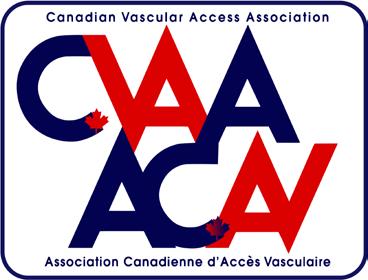


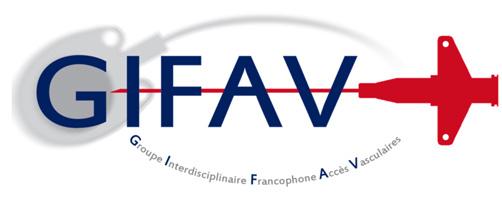






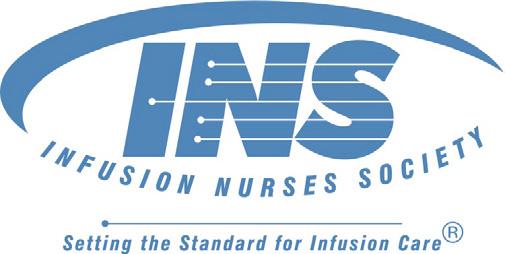


60 mins

April 17, 16:30–17:30
Implementing Best Practice Vascular Access Management: The importance of vascular access management and how the Vascular Access Team can help drive best practice
60 mins
April 18, 14:00–15:00
Enabling Technologies for PICC Placement: How ECG tip confirmation can help reduce procedure time and improve clinician’s workflow


BD is one of the largest global medical technology companies in the world and is advancing the world of health by improving medical discovery, diagnostics and the delivery of care. The company supports the heroes on the frontlines of health care by developing innovative technology, services and solutions that help advance both clinical therapy for patients and clinical process for health care providers. BD and its more than 70,000 employees have a passion and commitment to help enhance the safety and efficiency of clinicians’ care delivery process, enable laboratory scientists to accurately detect disease and advance researchers’ capabilities to develop the next generation of diagnostics and therapeutics. BD has a presence in virtually every country and partners with organizations around the world to address some of the most challenging global health issues. By working in close collaboration with customers, BD can help enhance outcomes, lower costs, increase efficiencies, improve safety and expand access to health care. For more information on BD, please visit bd.com/en-eu or connect with us on LinkedIn at www.linkedin.com/company/bd1/, X (formerly Twitter) @BDandCo or Instagram @becton_dickinson.
Shandong Branden Medical Device Co.,Ltd is founded in 2003, right now it is top leading medical device manufacturer in China. After 20 years development, Branden is engaged in various medical field such as cardiac, oncology, neurology, urology and imaging etc. In vascular access device field, Branden established various production line including PICC, wireless ultrasound, ECG module, Seldinger Kit, guide wire, tunnelling kit etc. Chest-Port and PICC-Port is currently undergoing clinical trials in China. We build tremendous distribute network include more than 4,000 hospitals around China. Our ultrasound guide PICC insertion project (EDUG) was selected as national key project. Every year we cooperate with China Intravenous Therapy Society to organize academic activities to promote Chinese nurses’ performance in VAD field. We are looking forward your future cooperation in both domestic and international market to facilitate VAD development.
As one of the world’s leading medical technology companies, B. Braun protects and improves the health of people around the world. For over 180 years, the family-owned company has been accelerating progress in health care with pioneering spirit and groundbreaking contributions. This innovative strength continues to be the foundation of B. Braun’s success today—always with the goal of improving clinical outcomes, cost of care and patient benefits. More than 65,000 employees live Sharing Expertise worldwide, they make B. Braun a true partner that develops smart solutions and sets new standards. By linking products, services and consulting, the company improves treatment processes and supports medical staff. In doing so, B. Braun always acts with future generations in mind, which is why responsibility for sustainable growth is embedded into all business processes. In 2022, the B. Braun Group generated sales of € 8.5 billion.
ICU Medical is a global leader offering clinically essential products and solutions that connect patients with caregivers through life-enhancing, innovative technology and services that provide meaningful clinical value. Our robust portfolio features medical delivery systems and consumable products for infusion therapy, emergency medicine, general and regional anesthesia, homecare, NICU/PICU, oncology, pain management, and respiratory care. We are a dedicated partner delivering leading-edge products across the continuum of care.
When you care for your vascular access patients, you want to optimise their experience without complications that can compromise their outcomes. At Teleflex™, we want to partner with you in achieving your goals. Our Arrow™ Brand of products are designed to minimize complications and enhance patient safety, with a wide range of catheters that feature proprietary Arrowg+ard™ Protection technology. On top of that, our Teleflex Academy offers an extensive clinical curriculum designed to provide clinicians like you with flexible options for free on-demand or in-person evidence-based vascular access education, all on your schedule. Together, we can help your patients receive the very highest standard of care
Vygon designs, manufactures and markets high-tech single-use medical devices for healthcare professionals. Vygon is a world leader within this industry, offering a complete range of products for short, medium and long-term access to the peripheral and central vascular system, from newborns to adults. A family company founded in 1962, Vygon is a mid-sized business employing 2,557 committed employees worldwide. Our products are manufactured in the group’s eleven factories including eight in Europe. Vygon combines local and international in-depth expertise and know-how in each individual field. With expertise right along the value chain, from product design to the delivery of training for medical personnel, we provide clinicians with effective and innovative products tailored to their needs for optimum use and safety. At Vygon, we Value Life through the innovation of our medical devices and their impact on improving and ultimately, saving lives. For more information on Vygon, please visit www.vygon.com.














Health Line International Corp. is a key player in the global market for vascular access catheters and medical devices. Our USA-manufactured products are distributed worldwide through partnerships with key distributors, supported by a team of clinical experts.

Interlinked from Sweden, brings you ReLink, managing the problem of IV dislodgement. Our breakaway connector is compatible with all IV catheters and limits IV dislodgement. ReLink boosts safety by protecting the catheter with its double-sided, self-sealing valves and weak link activation. Our design saves time by significantly reducing the need for IV restarts. ReLink, ready-to-use connector enhances patient safety and keeps blood and medicine from spilling. Visit us at booth B4 for information / demonstration and sales opportunities.
ivWatch is a biosensor technology company focused on improving patient safety and the effectiveness of intravenous therapy. Our dedicated and passionate team is pioneering the use of optical sensors to detect adverse IV events early to minimize the risk of injury caused by infiltrations and extravasations. By using this technology, clinicians can leverage continuous monitoring to help identify infiltrations as early as possible. Our innovative IV monitoring solutions are backed by decades of clinical research and device development.

NUMANTEC is a medical device group of different companies made up of different companies specialized in unique, cutting-edge healthcare solutions. Working as a team as innovation without cooperation isn’t enough. A full range of vascular access devices, elastomeric pumps, pre-filled syringes, and traditional syringes, together with urology and urodynamics products make our portfolio stunning and attractive, but the continuous research for functional, safe, and high-quality results is what makes us a reliable partner. Our mission to improve patients’ quality of life and making it easier in every day action thanks to highly performant devices completely focused on patients and final users.
“Established in 1995, Plan 1 Health proudly operates under the Polymed Group, a partnership formed in 2018. We are leaders in Italian innovation for implantable medical devices, driven by an unwavering commitment to excellence. Our focus on cutting-edge solutions redefines patient care, offering crucial support to healthcare professionals. Serving as a dynamic R&D partner, we meticulously navigate the entire product lifecycle within our state-of-the-art ISO Class 7 Clean Room facility. Together, we strive for global competitiveness, fostering long-term partnerships to achieve common objectives and elevate healthcare standards worldwide.”
StatSeal topical dressing products work with any protein-rich body fluid to create an instant, occlusive seal over insertion sites and wounds to prevent oozing and bleeding. The seal creates a hostile barrier to microbial penetration and strengthens over time, while natural clotting continues beneath the seal. StatSeal products are available in both powder and disc form, to suit a wide variety of clinical applications and to fit a full range of catheter sizes.
In 2000, TauroPharm GmbH was founded as a German company specialising in medical devices with antimicrobial, antibiofilm and antiocclusive efficacy. Based on its innovative products, we aim to develop more effective ways to prevent catheter-associated complications – ranging from blood clotting to fatal infections. Throughout this process, improving the patient’s quality of life remains our top priority.
Since there is an urgent need for our products, especially in light of the steadily increasing number of antibioticsresistant pathogens, TauroLock is recommended in interdisciplinary national and international guidelines. All products have been investigated in independent scientific studies with excellent study results.




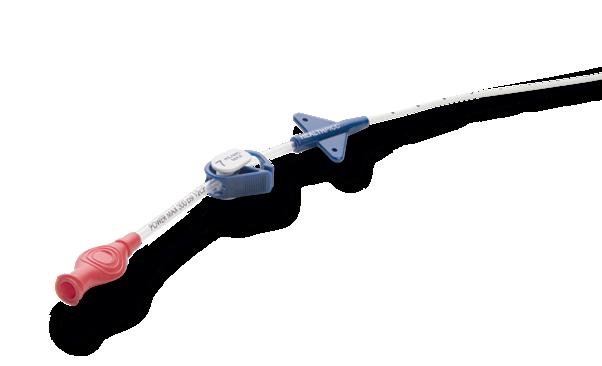
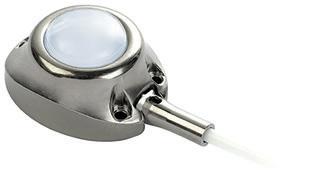

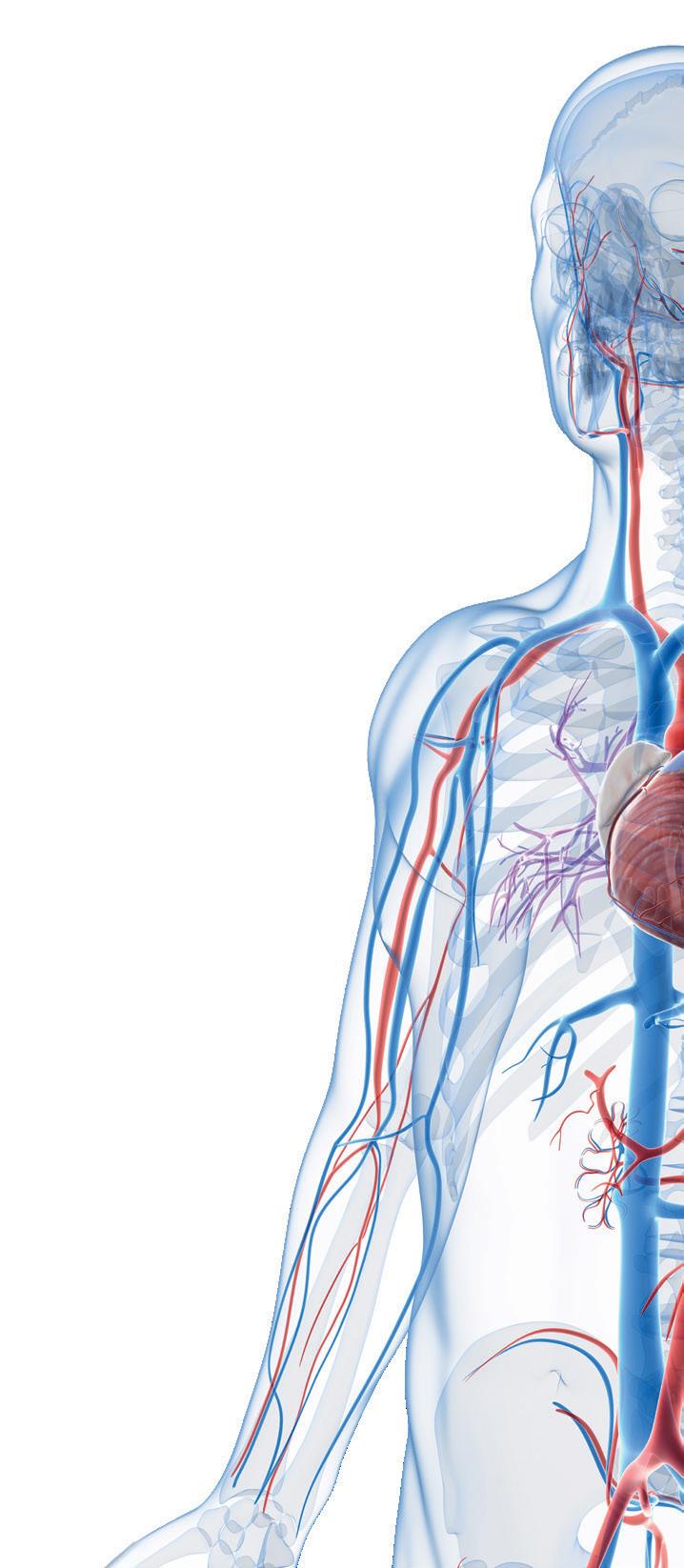


Standard of care in vascular access typically involves the use of multiple products for securement and insertion site protection. See how SecurePortIV® Catheter Securement Adhesive by Adhezion Biomedical is combining multiple patient and caregiver benefits into one product. SecurePortIV catheter securement adhesive secures both the catheter to the insertion site and the hub to the skin, reducing catheter movement, migration and dislodgement. Adhezion Biomedical, LLC is now a subsidiary of the H.B. Fuller Group.
AnderMed is a Sino-French joint venture, dedicated to R&D, production and marketing of innovative medical devices including vascular access, infusion therapy, clinical specimen collection, surgical products, interventional therapy etc. As a key player of medical industry in China, AnderMed has been leading and participating in drafting over 50 national and medical industrial standards. The company owns more than 150 patents. FDA 510K, CE certificate and WHO PQS Certificate have been acquired for the main product portfolio.
Bedal provides the best-in-class catheter securement devices under the brandname FlexGRIP®. A portfolio of products allows the secure fixation of all types of catheters. FlexGRIP products excel in providing the highest security, intuitive usage and patient comfort.
Bullpup Scientific M/29 PRO Next generation IV catheter. The future of Midline technology is here today - A redesigned BullPup the better becomes best. mini-midline, an innovative, simple over the needle insertion with a dwell time of up to 29 days with minimum training, maximum performance. Single hand operation, blood stop and fully enclosed system. Midline performance with the simplicity of standard IV cannula - The future of the IV access made available today.
Cair LGL, European manufacturer of disposable medical devices, is specialized in fluid administration, from the bag to the patient and supplies sets of infusion, chemotherapy, nutrition with ENFit connection and aspiration. Products are sold worldwide through partnerships and subsidiaries in Europe.
GEM S.r.l., is an Italian company, since 1994 manufacturer and worldwide distributor of synthetic adhesives: Glubran® 2 for Surgical and Endovascular uses, Glubran® Tiss 2 for wound care and VADs management (PICCs, CVCs, etc.). Producer of all the related devices to apply Glubran® adequately: Dispensing Tips, Catheters, Nebulizers for open and laparoscopic surgery. Glutack® system for open and laparoscopic atraumatic hernia mesh fixation. All CE marked.
Jiaxing Tianhe Pharmaceutical Co., Ltd. is a specialist manufacturer focused on producing disposable blood bags and pre-filled flush syringes. Our products comply with the ISO 13485:2016, MDD93/42/EEC, and GMP regulation.
Kimal is an innovative manufacturer and distributor of customised procedure packs and vascular access devices to clinical departments in over seventy countries worldwide. The company manufactures over two million procedure packs and vascular access devices every year for a range of specialities including Cardiology, Radiology, Pacing, Laparoscopy, and Cardiac Surgery; and its unique, ground-breaking central venous catheter technology is helping to reduce patient risk in hospitals across the world.
MEDISYNER has been specializing in venous access and respective accessories since 2011. However, our experience in this field goes back even further. We offer a wide range of medical products from both Czech and foreign manufacturers – focusing mainly on mid-term and longterm vascular access as an exclusive distributor for MEDCOMP power injectable Piccs, ports and midlines.
Our family-owned molding company has grown with a constant commitment to innovation. That’s why we embarked on our entrepreneurial challenge: to create a series of products that would enable people to overcome the discomfort caused by having to wear orthopedic and medical braces, thus rediscovering the pleasure of wearing their favorite garments during and after treatments. Coverpicc is born—a line specifically designed to protect the Picc in daily life and from water.
Medline is a medical equipment manufacturing company operating in 125+ countries with 30,000+ employees. With our wide range of products, from gloves to facemasks, we enhance care settings and optimize facility performance. Founded in 1966 in the U.S., Medline expanded to Europe in 2011, now present in 11 countries. Manufacturing, distribution, and personnel investments reflect our commitment to growth. With our tagline ‘Always On,’ we focus on customer needs and quality care.

Reliable filtration for medical applications. As the medical industry works to lower costs, improve quality, and protect patients, we can help you comply with changing healthcare standards.
UltraDrape™ is an innovative dressing designed for use during Ultrasound-Guided Peripheral Intravenous (UGPIV) that provides dualaction barrier and securement in one. This eliminates the need for sterile gels, covers and tedious post-IV procedure cleanup.


pfmmedical is an internationally active company and a leader in the healthcare sector. Founded in 1971 and headquartered in Germany, the family-owned company has 12 locations worldwide. The portfolio distributed in more than 100 markets, covers the medical focus areas of infusion, histotechnology, cardiovascular technologies and surgery. Especially in the field of vascular access users around the world rely on our implantable port systems and our more than 30 years of experience.
The SecurAcath® Subcutaneous Anchor Securement System (SASS) is a revolutionary new method for catheter securement that does not require sutures or adhesives. Small, flexible securement feet placed in the subcutaneous tissue secure for the Life of the Line™ and dramatically decrease catheter migration and dislodgement, decrease catheter replacement costs, significantly reduce risk of catheter-related infections and other complications, prevent catheterassociated skin injury (CASI), eliminate suture needle stick risk, and lower total cost of patient care.
Spectrum Vascular is an innovative medical device company focused on vascular access and medication management. The company’s mission is to improve the lives of patients worldwide by providing caregivers with high quality, innovative products with exceptional customer service. Innovation has been a core strategic pillar throughout Spectrum Vascular’s history and many of its products have been designed to deliver antimicrobial and antithrombogenic protection or to support certain patient populations such as those who are critically ill and pediatrics.

SterileCare Inc (SCI) is a medical device company that develops preventative and treatment-related solutions to fight against the threat of serious infections. SCIs non-antibiotic antimicrobial catheter lock solution significantly reduces the incidence of Central Venous Access Device complications, including those caused by antibiotic resistant organisms, which are becoming increasingly more complicated to prevent and treat. SCI’s products focus on improving patient quality of care so they can focus on getting better.
TIDI® Products has a history of providing forward-looking solutions that help reduce the risk of contamination and deliver the highestquality patient care. The TIDI Products Grip-Lok® Securement Devices portfolio offers a variety of securement solutions with strong adhesion that are also gentle on patient’s skin. Ensure the right securement for both primary and secondary applications with the use of GripLok. To learn more about TIDI Products and its Grip-Lok portfolio, please visit https://www.tidiproducts.com/product-listing/grip-loksecurement-devices.
Tristel manufactures medical device decontamination products for infection prevention worldwide. Our proprietary chlorine dioxide chemistry delivers fast, practical, and complete high-level disinfection. Join us on stand E11 to see our newest innovations for infection prevention.




Network dinner and music in the magnificent Žofín Palace on Moldau river
Wednesday 17 April 2024
19:00 Welcome - 20:00 Dinner - 24:00 End of the evening
Price: 90 Euro (please check if tickets are still available)




Make sure to start with an exciting WoCoVA congress while joining our symposium
Peripheral Intravenous Catheters: A Global Glance on 17. April 2024, 11:15 am - 12:00 pm, venue South Hall
Moderated by: Stephanie Pitts, DNP, RN, CPN, VA-BC, NEA-BC (USA)
Co-presented by: Sandra Dvorakova, PVC lecturer, MOTOL University Hospital (CZ)
WIFI access
Network name: 8th WoCoVA Password: Wocova24
Networking dinner
The networking dinner will take place on Wednesday April 17 from 19:00 till 24:00h in the Zofin Palace.
Registration and badges
All participants are obliged to wear their name badge during all events. Admission to the sessions is restricted to registered participants wearing their name badge. Your badge will be handed out to you at the registration desk at the Prague Congress Centre
Opening hours of the registration and information desk:
Wednesday 17 April 08:00 - 17:30
Thursday 18 April 08:00 -17:45
Friday 19 April 08:00 - 17:15
Venue
Prague Congress Centre (PCC)
5. května 1640/65, Nusle 140 00 Prague 4, Czech Republic
Colophon:
WoCoVA Congress Brochure
Prague, Czech Republic, April 2024digital brochure
Contact P.O.Box 675
3720 AR Bilthoven The Netherlands
Phone: +31 6 12 05 38 80
E-mail: info@wocova.com
www.wocova.com
Editors
Jacoline Zilverentant
Ton van Boxtel
Toine Hulshof
Lynn van Rennes
Photo & Video
WoCoVA
Sponsors and Exhibitors
Lex van Groningen
Graphic Design
Rinse Lenderink
WoCoVA
P.O.Box 675
WoCoVA
3720 AR Bilthoven
P.O.Box 675
The Netherlands
3720 AR Bilthoven
Phone: +31 (0)6 120 538 80
The Netherlands
Phone: +31 (0)6 120 538 80







